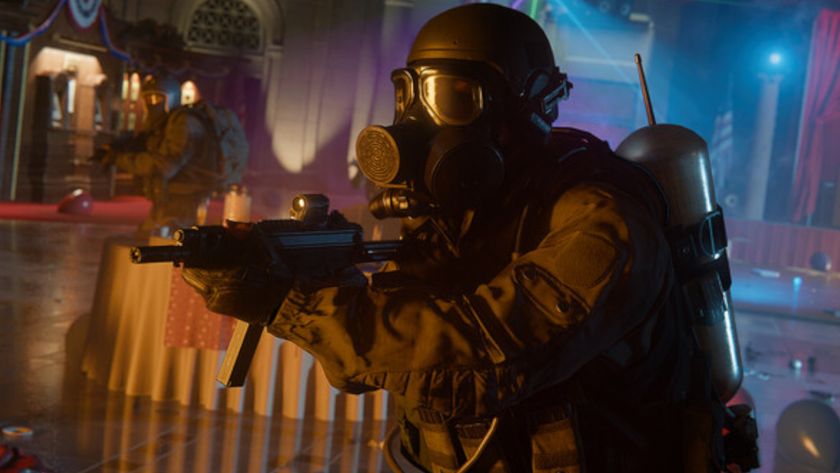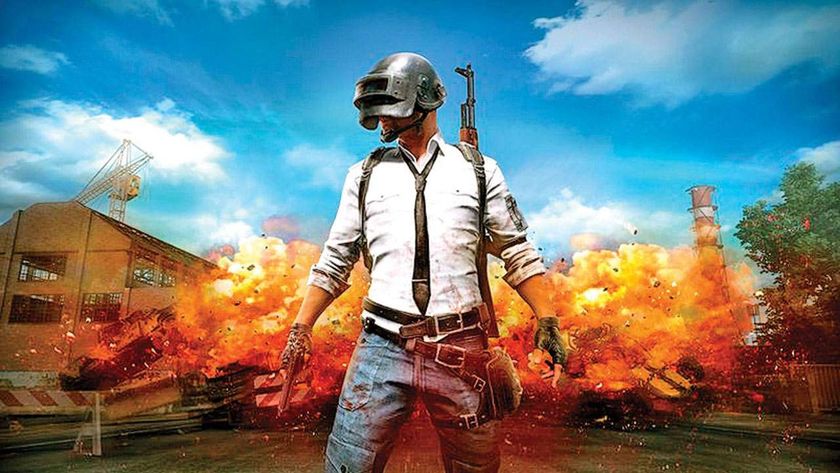Call of Duty WW2’s Michael Condrey on COD’s social focus, going back to basics and the new War Mode
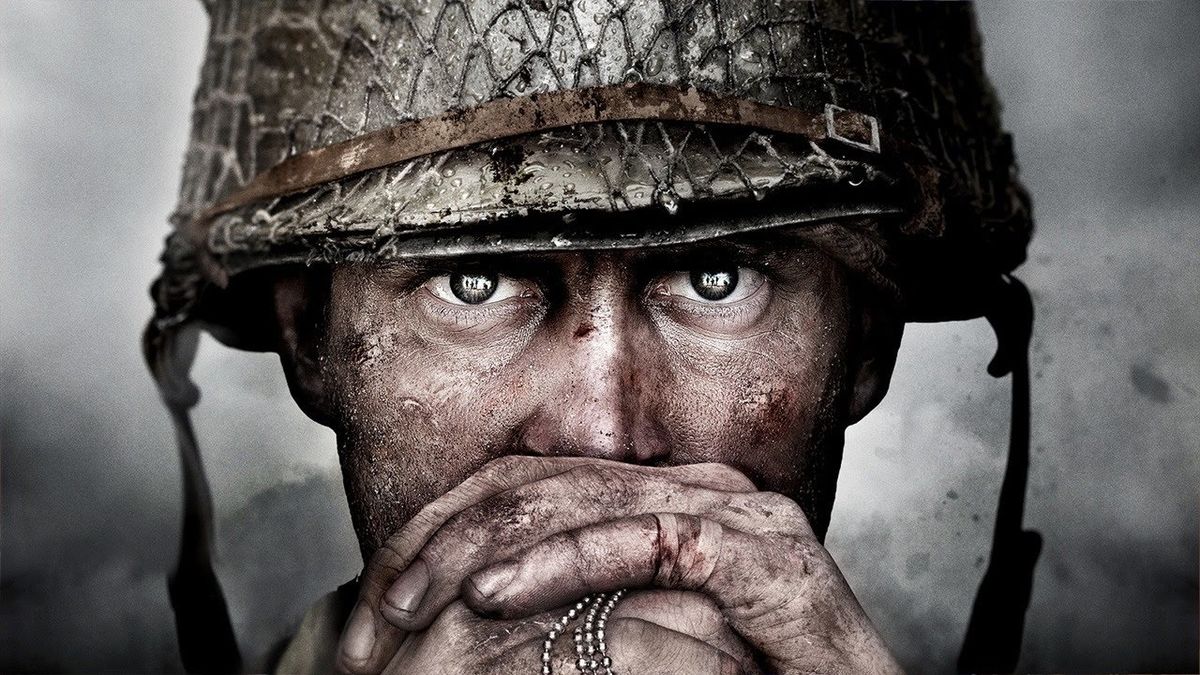
For the first time in 10 years, Call of Duty is going back to its WW2 roots, going back to that “boots on the ground” combat that everyone keeps banging on about, which is ultimately a really good thing for the series. The past few series entries, Call of Duty: Infinite Warfare in particular, have gone for the future tech angle, all jetpacks, spacesuits and zero-grav firefights. But Call of Duty WW2, as the the title suggests, is very much on the ground in Europe fighting the battles that have gained such a huge place in history.
And for Sledgehammer Games, the team behind the game who previously brought you Call of Duty: Advanced Warfare, returning to the World Wars has been like coming home.
“It’s been fantastic, I have to tell you,” explained Michael Condrey, Studio Head at Sledgehammer Games to 12DOVE. “I loved what we did on Advanced Warfare, but we had to create a world, we had to have you believe in that world, we had to bring technology together that you would adopt and believe in, make it feel authentic and believable even though it’s future technology and future movements. It was a really fun challenge, but this, this tapestry of World War 2, with its iconic weapons, locations and the battles, to bring that world to life, to honour and respect the cause… it was really wonderful.”
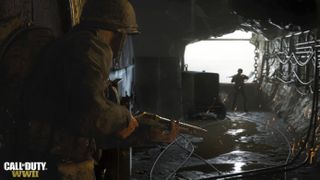
The team has spent three years on the game, going to the sites of iconic battles and moments of World War 2 and visiting museums to make sure they get the feel of each location right. But for the team, although those locations are incredibly important, there’s also a great need to make sure the people who fought in the war are also represented correctly.
“World War 2 was really about common men and women. Our last game, Call of Duty: Advanced Warfare, was about a super soldier, it wasn’t about a group of people. The roots of Call of Duty are in groups of common men and women coming together to accomplish extraordinary things. It wasn’t a super soldier, it was a 19-year-old kid from the Bronx who had to rely on the people around him.”
And that’s the basic story for the game’s single-player campaign, which follows Red Daniels, a 19-year-old new recruit from Texas, who’s not a trained soldier, but rather a young kid sent to Europe to fight alongside other equally ill-equipped men and women. From what we’ve seen and heard so far, it seems that story is just as much as about Daniels as it is about the camaraderie between him and his squadmates.

It’s that sense connection that’s become a running theme throughout Call of Duty: WW2, particularly in the two brand new features it brings to the series - the multiplayer War mode and the Destiny-esque social space known as Headquarters.
Sign up to the 12DOVE Newsletter
Weekly digests, tales from the communities you love, and more
“Headquarters was really meant to capture the community and the comradery of the community that we haven’t had in the franchise before,” explained Condrey. “For us it really was about giving the community a place to come together. We have a great community who want to have an activity in a space outside of Team Deathmatch or War Mode, so we call it the ‘off the front lines experience’.”
Headquarters incorporates a ton of experiences away from the traditional multiplayer tropes of Call of Duty, from testing your skills at the firing range and running assault courses to picking up daily missions and nabbing some goodies in supply drops. But it’s also the hub for all things multiplayer. “Headquarters is where you start every time, it fits seamlessly with the lobby. It’s your initial onboarding where you look at your Division, and then you decide what you’re going to do with your time.”
And for me, that’s going to be playing the new War Mode. It’s a fresh mode coming with Call of Duty WW2 that pits two teams of XX against each other on historically-based asymmetric maps. For the Call of Duty: WW2 beta, players get access to Operation Breakout, that’s actually based on a real WW2 mission called Operation Cobra. The fact that it’s not all out carnage like Team Deathmatch for example, it feels more controlled, dramatic and also narrative driven than more traditional multiplayer modes.
“It’s been interesting because, you know the campaign is really rich and the narrative is really meaningful - it’s the place where we’re really focused on honouring and respecting the war, and being really authentic to it.”
”Multiplayer has some creative liberties of course, you have scorestreaks, life respawns and auto-regenerating health. A lot of capturing the return of boots on the ground, the iconic weapons, iconic locations has felt really natural to us and War Mode has allowed us to expand that to put you in these conflicts that feel like what you’ve seen of WW2. For us it’s got these really intense narratives that makes it feel like WW2, it truly captures team play, and it can be very dramatic in a fun way.”
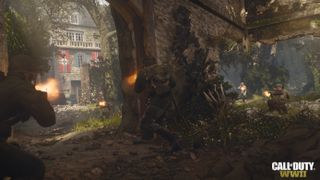
It feels like a definite shift away from the existing roster of multiplayer modes, with a more serious tone. Condrey says the aim was to capture the “gritty and brutal” tone of WW2 and that’s certainly true to an extent - this is still a videogame after all.
“We love traditional multiplayer, obviously, the fan favourite modes are still super fun. But War does play out in a very different way and with custom maps and these asymmetrical experiences we can put you in places that a traditional map just wouldn’t allow. And we can allow you to see the conflicts from both sides, from the Ally and the Axis perspectives.”
“One of the War maps is Operation Neptune and that’s D-Day. You will play D-Day from the Axis perspective, you’ll begin by having to hold the Allies off the beach and I don’t think anyone’s ever seen that before, let alone played that before.”
Call of Duty WW2 feels like a brave attempt to not only portray the Second World War with respect, but also hopefully revitalise the Call of Duty series. But we’ll have to wait until November 3 to find out whether Sledgehammer has been successful.

Sam Loveridge is the Brand Director and former Global Editor-in-Chief of GamesRadar. She joined the team in August 2017. Sam came to GamesRadar after working at TrustedReviews, Digital Spy, and Fandom, following the completion of an MA in Journalism. In her time, she's also had appearances on The Guardian, BBC, and more. Her experience has seen her cover console and PC games, along with gaming hardware, for a decade, and for GamesRadar, she's in charge of the site's overall direction, managing the team, and making sure it's the best it can be. Her gaming passions lie with weird simulation games, big open-world RPGs, and beautifully crafted indies. She plays across all platforms, and specializes in titles like Pokemon, Assassin's Creed, The Sims, and more. Basically, she loves all games that aren't sports or fighting titles! In her spare time, Sam likes to live like Stardew Valley by cooking and baking, growing vegetables, and enjoying life in the countryside.
Most Popular






